A Season of Nutrition
How to fertilize your vines for maximum quality
The following was originally published in Wine Business Monthly in February 2019.
Management of vineyard nutrition is not an exact science, but nutrient/fertilizer management is not something that should be handled generically either. It’s quite easy to approach fertilization with off-the-shelf blends that your distributor carries and those may be quite adequate. Or they may not be. As for most of viticulture, timing is everything. So, the application of nutrients has a time element. Instead of my typical approach of discussing the topic nutrient-by-nutrient, I’ll discuss them instead by phenological stages.
Budburst
At budburst (some people told me that ‘budburst’ was more accurate than ‘budbreak’ so I’m trying to use that term when I remember to), soil is cold and roots are just emerging from dormancy and the vine is not doing a whole lot of uptake of anything. So, fertilizer applications now should be limited. However, I have found that vineyards who lack in vigor benefit from a small application of nitrogen at budburst. Now, ideally, this nitrogen should be mostly available from storage within the vines’ tissues, so post-harvest fertilization can help here. But since we’re going chronologically here, I had to start somewhere. Regardless, some vineyards struggle early in the season so a small application of nitrogen fertilizer at budburst is sometimes advisable.
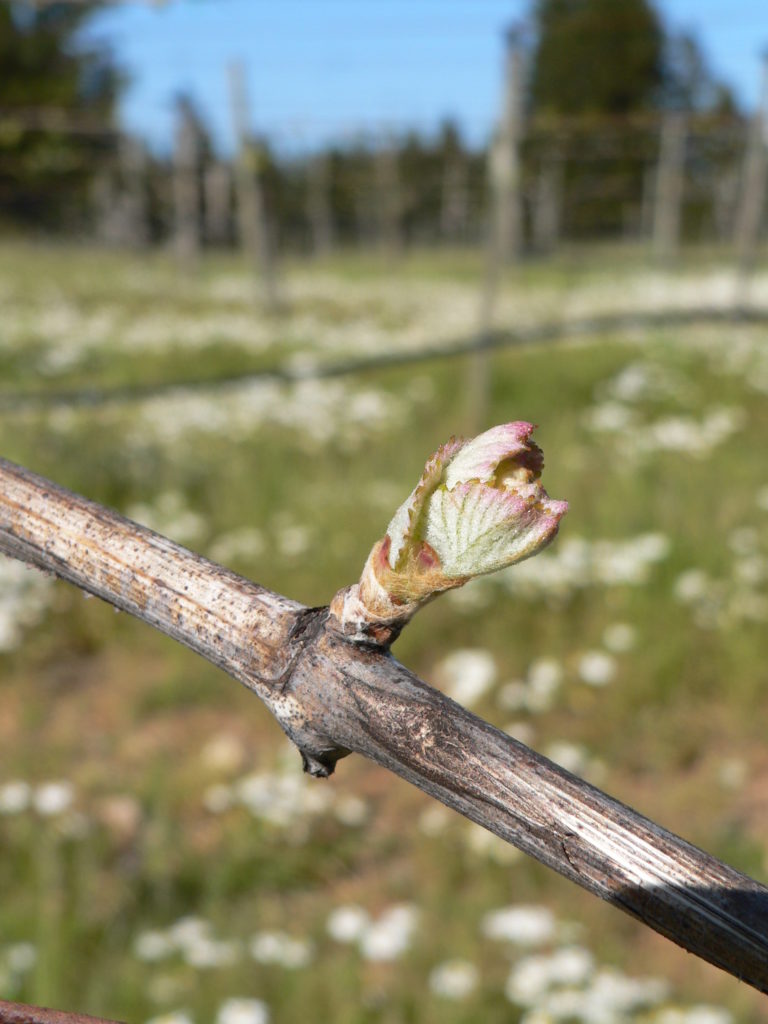
For conventional vineyards, I like to apply something as simple as urea (46-0-0) at that time, usually only at 3 pounds of N per acre. For organic vineyards, I will apply more N, but no more than 5 pounds of N per acre. Organic fertilizers have their N largely in organic form (obviously), which will be broken down and mineralized by soil microbes for uptake by plants. This is a much slower process than the application of mineral forms of N.
It’s important not to apply the N too early in a wet climate because nitrate-N will easily leach through the soil profile. However, applying fertilizer around budbreak time and towards the end of the rainy season is a pretty safe bet. I like to use urea because it is cheap and because it quickly breaks down into ammonium ions, which are not likely to leach. However, they will rapidly volatilize, so it is important to chase the urea with some water after injection of urea to push the minerals below the soil surface. While plants can take up ammonium, they are much more probe to take up nitrate-N. Urea will be nitrified by microorganisms rapidly so that the nitrate can be taken up by the vines.
Besides, N, there is really nothing else that needs to be applied at budburst.
Pre-bloom
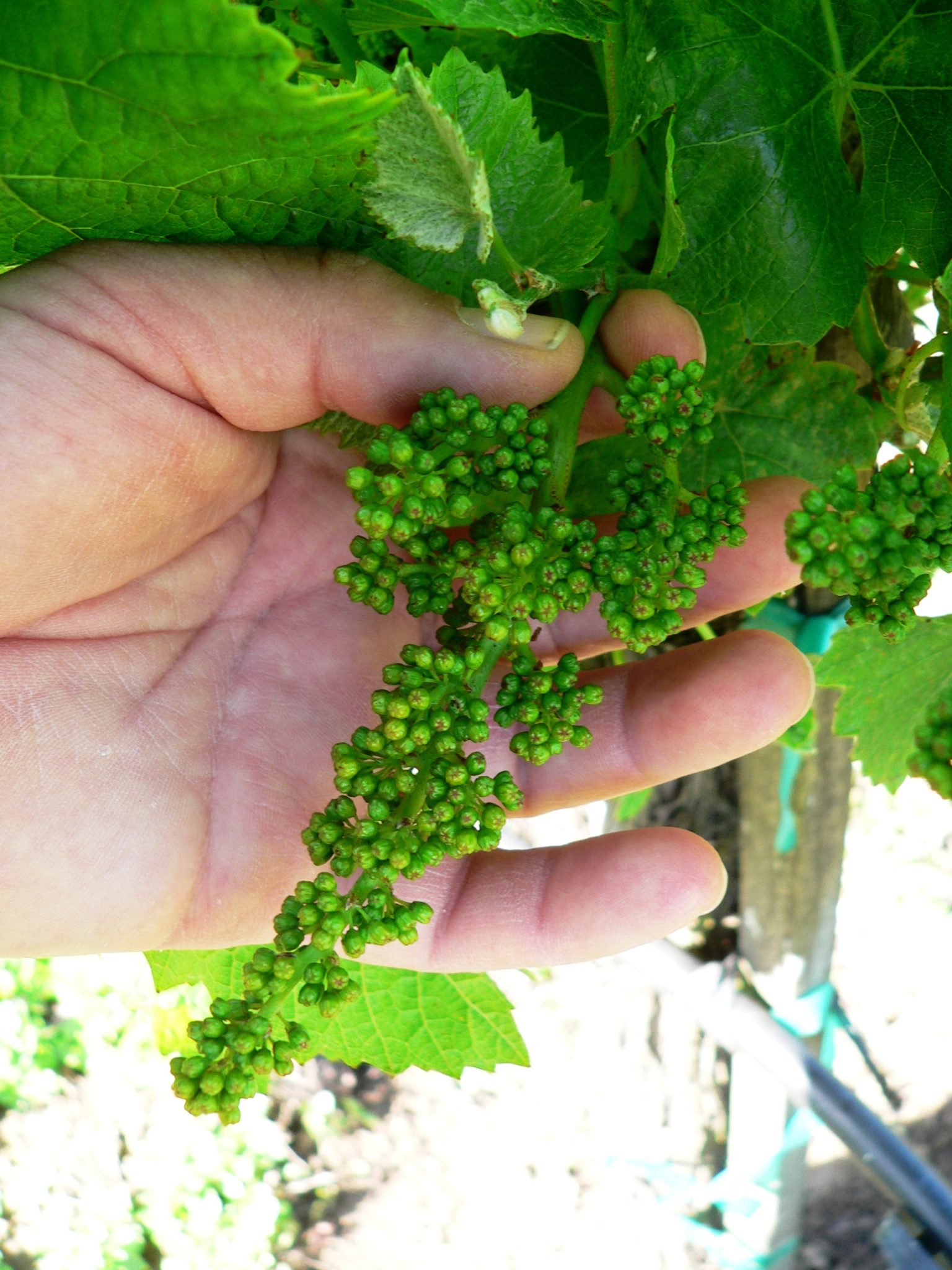
Pre-bloom is time for micronutrients primarily. This is the best and usually the only time that micronutrients are applied and the application method is usually foliar. Commonly, boron and zinc are applied at this time, but some vineyards have benefitted from an application of molybdenum as well. Molybdenum has been shown to be effective for Merlot, but I like to add it to foliar applications in vineyards that tend to set fruit poorly. It’s needed only at rates of ounces (by weight) per acre, so the cost is low unless it is included in some proprietary fertilizer blend.
It is usually advisable to apply both boron and zinc before bloom, however, unless tissue levels of these nutrients have tended to be adequate or elevated. This is especially true for boron, which is toxic to vines at elevated levels. Ideally, I prefer to split the micronutrients in two consecutive sprays, included with the standard mildew control sprays. The reason for splitting the application is really twofold: as a hedge for getting the timing right (ideally applied two weeks before bloom) as well as a way to reduce risk of phytotoxicity, primarily by boron. Incidentally, with respect to boron, borax is often used as an organically-acceptable form of boron, which can be used foliarly. However, it is a sodium salt and can possibly cause desiccation of flower parts or pollen, so we usually try to avoid its use after bloom has started. Otherwise, there is no hazard in applying micronutrients even during bloom.
Also, we have found that boron applications during the winter to the vine rows can be effective. It can be added to an herbicide strip spray. Organic vineyards may not use herbicide sprays, so this may not be an acceptable alternative, but it is one to consider if herbicide sprays are conducted. Zinc applications may also be made in this manner, but it is essential that zinc fertilizers applied to the soil be in a chelated form, or they will quickly become unavailable to the vines.
Aside from micronutrients, we often see “spring fever” symptoms at this stage, and this is usually caused by a temporary potassium deficiency. This is seen in spring, most often during cool or wet springs, when the root system has not fully flushed, and nutrient uptake is restricted as a result. So, it is sometimes advisable to put on a small application of K fertilizer prior to bloom. We don’t want nitrogen, because excess N could impair fruit set, so a K-only product is usually best. This can be done through the drip system using something like sulfate of potash (acceptable for organic), but there are some foliar K materials that work as well. I have been liking the potassium acetate-based products, as they seem to be effectively taken up by the plant. But, for organic applications, it is not an acceptable product.
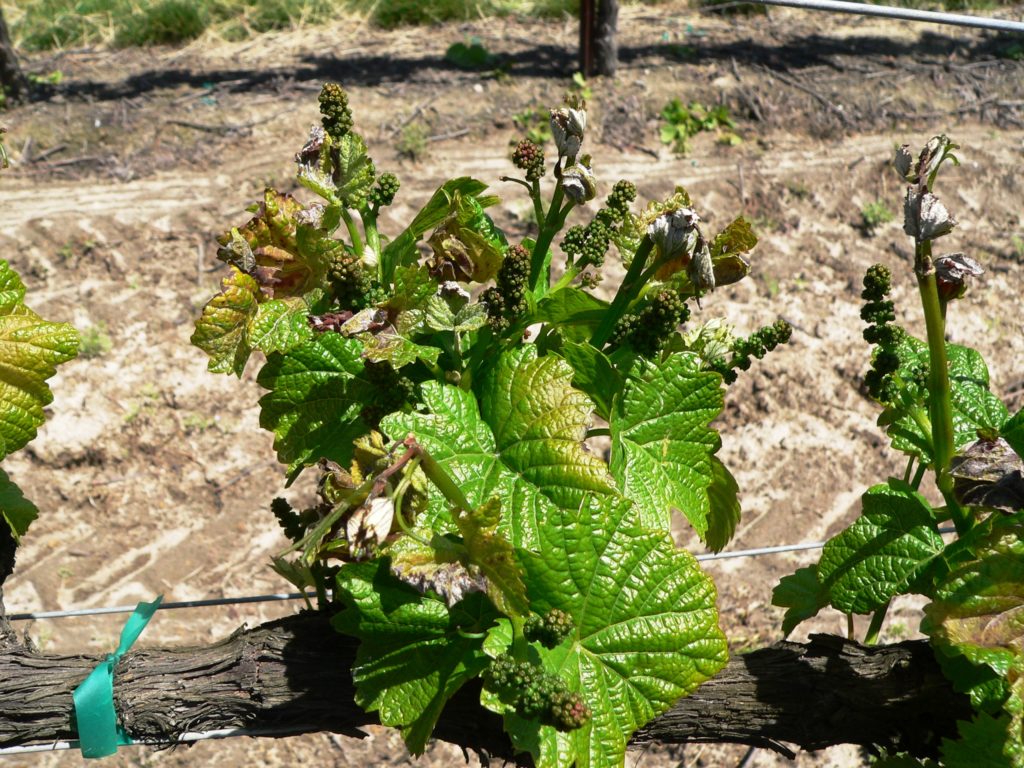
Post-set
Fertilization after set is the big fertilization event of the year. Usually following our receipt of tissue sample lab results, this is where we apply most of our macronutrient fertilizers. Its, conveniently, also a time where uptake rate of the macronutrients are at a high level, so applying the majority of our nutrients at this stage is the optimal time. Another shot of N is good right now, to keep shoots elongating and leaves green and productive. Still, I only apply 3-4 pounds of N per acre to premium vineyards because I want to slow shoot elongation down before veraison and too much N will reduce that ability.
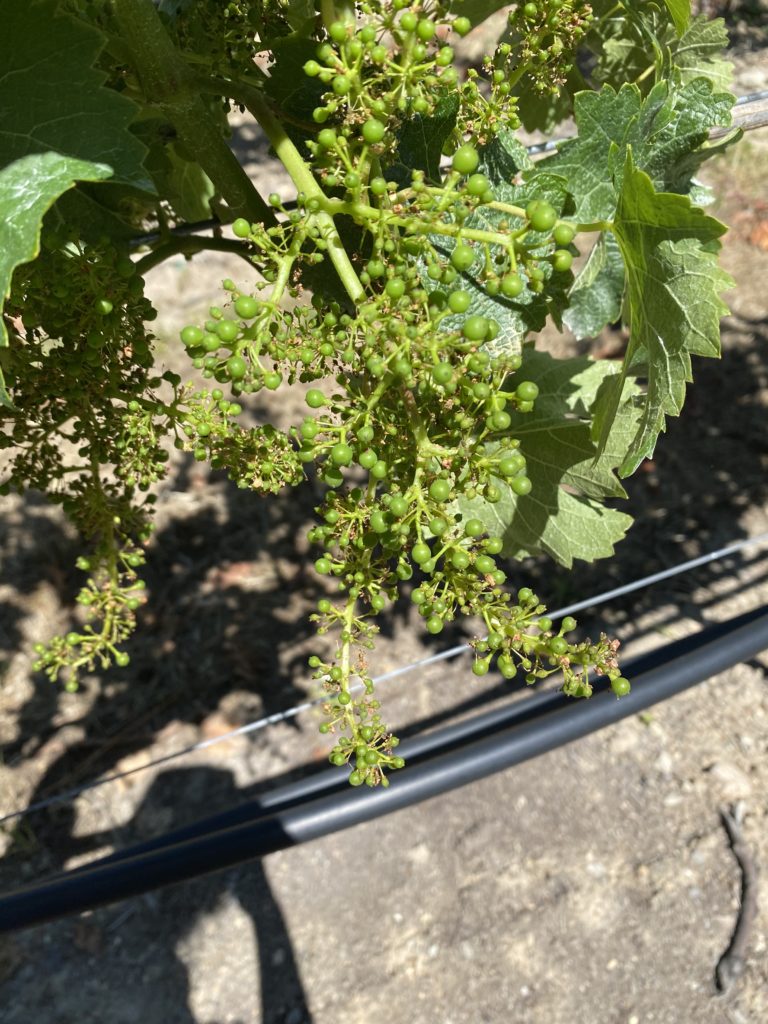
Potassium and phosphorus can also be applied at this time, as both are being taken up rapidly at this stage. This is the time I prefer to apply the majority of both those nutrients, especially K, as applying K during ripening may cause elevated K in the juice, which could in-turn hamper wine quality. For non-organic vineyards, a fertilizer blend could be used, with much higher rates of K and P being applied than N. So, if I use a blend, I still aim for the 3-4 pounds per acre of nitrogen. If additional K is needed, it is easy to find liquid fertilizers but my go-to is finely-ground sulfate of potash, which can be suspended and partially solubilized and injected. Phosphorus, on the other hand, is usually found in fertilizer materials along with nitrogen, such as in solid and fairly soluble monoammonium phosphate (MAP, 11-52-0) or liquid ammonium polyphosphate (10-34-0).
For organic vineyards, nitrogen and potassium are easy. Fish emulsion has good amounts of nitrogen and varying amounts of P and K. But again, if high amounts of K are needed, it can be supplied by sulfate of potash, which is okay to use in organic systems. The difficult nutrient for organic vineyards is P. It is difficult to make a P fertilizer that is soluble and injectable through the drip system. There are organic P fertilizers, but many are suspensions of phosphorus materials that are not soluble. And phosphorus is readily bound in the soil, so insoluble phosphorus is not readily available to vines, unlike the solution-based inorganic materials. For long-term issues with P-deficiency in organic vineyards, it is better to apply a large amount of rock phosphate, or preferably soft rock phosphate that comes in finer particle sizes, under the vines and under the emitters if the vineyard is irrigated.
Aside from the N-P-K fertilization, Ca and Mg materials may also be applied at this time if they are found to be needed, either from bloom tissue samples or from veraison tissue samples from the prior year. Ca is commonly applied as suspension-grade, finely-ground gypsum, which can be injected using the proper machinery. Alternatively, calcium thiosulfate (CaTs) is soluble and may be injected using any solution injection equipment. For Mg, we usually inject Epsom salts (magnesium sulfate, 10% Mg), which is very soluble and can be injected easily. There are really no other materials to use for Mg applications. One thing that I and my associates have found is that it is not effective to apply Epsom salts as an amendment, i.e. in large quantities. I usually apply Mg at about 30 pounds per acre and apply it one or two more times after the post-set application (if the vines need it).
Lag-phase, pre-veraison

Vines continue to take up macronutrients readily at this time. Yet, as I stated before, we try to avoid applying K this late, because it could cause issues with wine quality. Nevertheless, we’ve been more and more willing to apply K just prior to veraison if the vines are chronically low in K, in which case the risk of high juice K is minimal. Also, and even though the university says it doesn’t help, I still believe that elevating K (as well as P) this late into the growing season may help to reduce symptoms of red blotch and leafroll virus. Or, at least it may help the vines to better cope with the loss of photosynthesis that goes along with the symptom expression. So while I have no problem applying P at this time if the vines are low in P, I always take all factors into consideration when deciding whether to apply K fertilizer or not.
On the other hand, applying a little N may be wise, but again only if we are tending to be on the low side of total-N in the plant tissues. We don’t want to apply so much that the vines continue to grow past veraison, but if we’ve got them under control and the shoot tips are slowing down or have stopped growing, we can apply a small amount of N now to keep the vines green and leaves productive through the ripening phase. And winemakers generally do not mind a little bit extra yeast-assimilable nitrogen (YAN) in their musts. I would prefer to apply N now than after veraison, if only because I prefer to do as little manipulation once the vines are ripening fruit. However, the amount should be small (less than 3 pounds N per acre). Nitrate does have a suppressing effect on some of the ripening processes that occur at and after veraison, including pigment formation, so we want to be very judicious about its use at this time.
This is a good time to make a second application of Ca or Mg if those nutrients tend to be needed.
Ripening
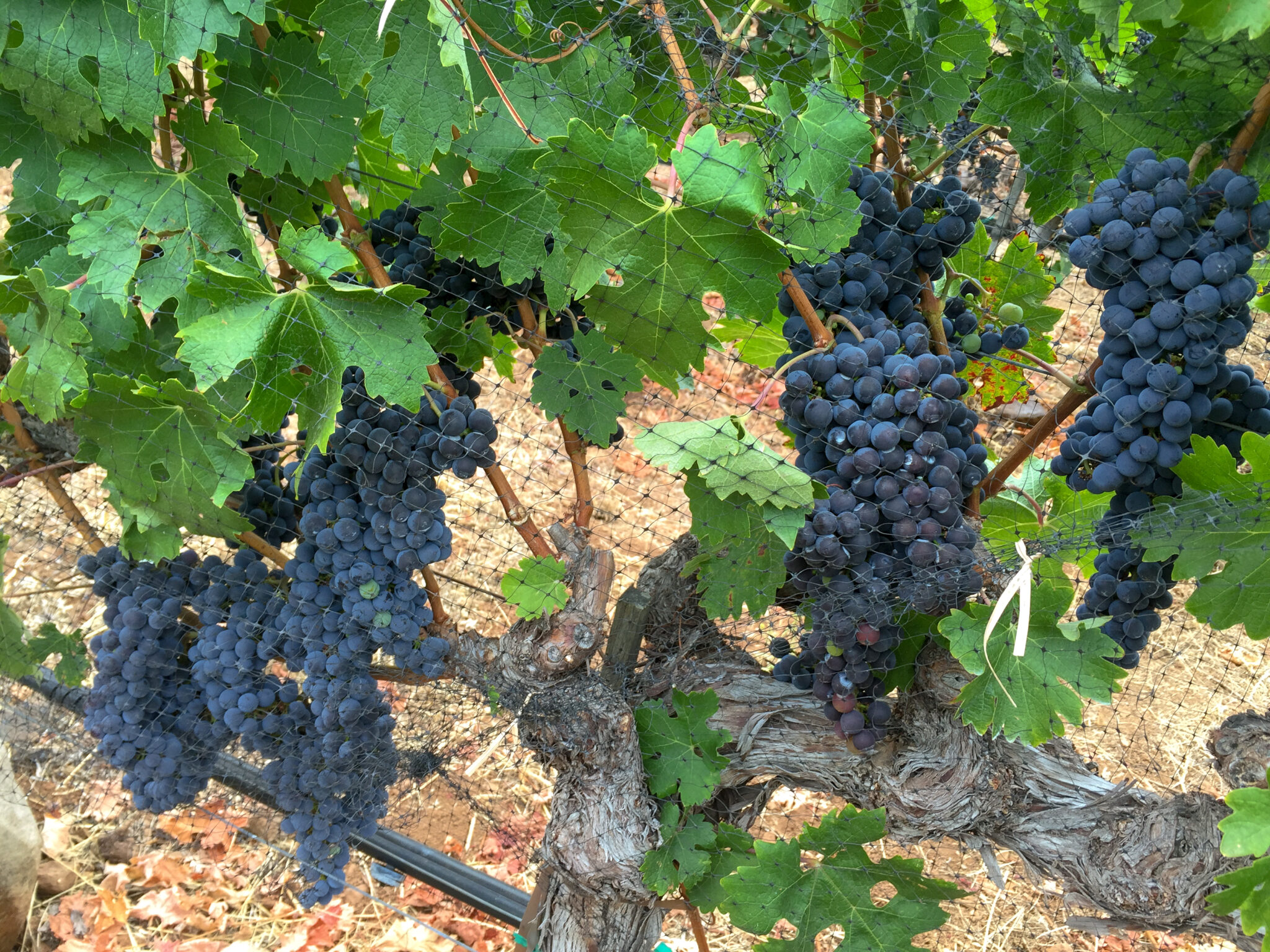
As I mentioned above, I prefer to apply as little inputs as possible after veraison. We generally forego any N-P-K at this stage, with the possible exception of late-season applications of N and/or K if fruit ripening stalls, usually for reasons of disease and only in truly dire circumstances. Otherwise, we forego fertilization, though again it is perfectly fine to apply Ca and Mg to vines at this time if they are needed. I know of no downside to fruit and wine quality by late-season applications of either of these nutrients.
Post-harvest
The most neglected time of the season is post-harvest. Growers are busy picking other blocks, are busy thinking about harvest and only harvest, and when they get around to thinking about fertilization, the vines have dropped their leaves. At least this is a common sequence. Just like post-harvest irrigation, it is very important to apply some fertilizers at this time. The primary nutrients stored in the vine itself are N and K, so an application of these nutrients (or more likely an N-P-K blend) should be applied post-harvest. Again, a modest quantity is all that is needed, such as 3 pounds of N per acre and roughly 6-8 pounds of K per acre. There is no harm in going at a higher rate of K, since it will not be lost, but applying amounts of N that cannot be taken up by the vines will be lost in wet climates by leaching. Furthermore, we don’t want the vines to start putting out new growth, which saps carbohydrate from the vines.
It is usually not necessary to apply other nutrients, but I also like to apply Ca and Mg materials post-harvest if the vines are in good shape and leaves are green and are well in advance of dropping their leaves.
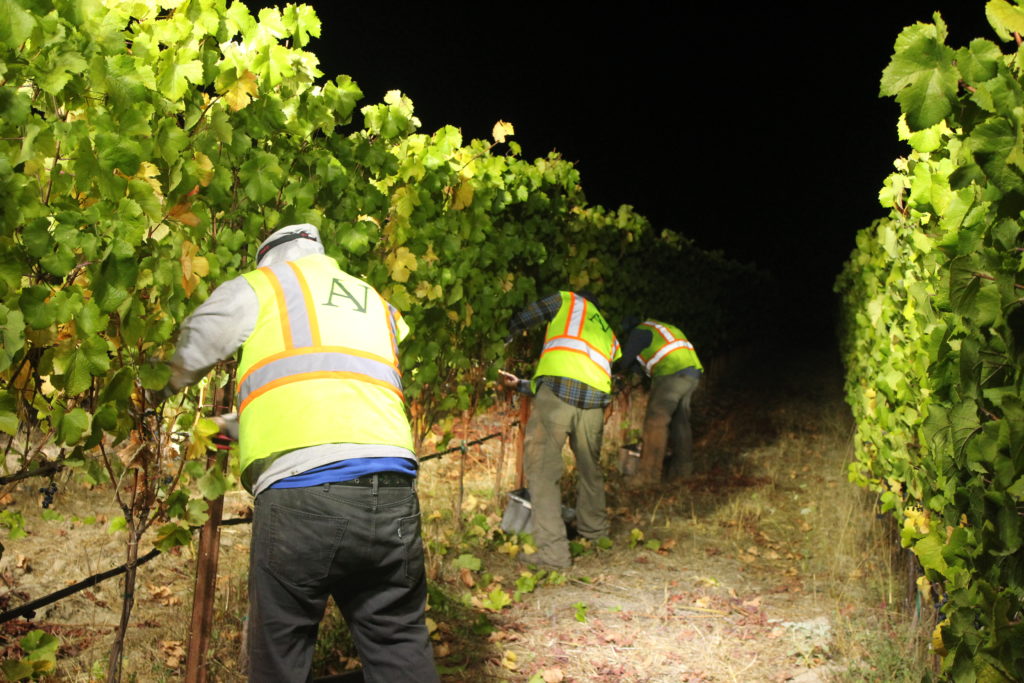
Finally, since the following growing season starts at harvest, it is important to sow a cover crop in most situations and a portion of the cover crop seed blend should be made up of N-fixing legumes, such as beans, peas and clovers. I don’t care for vetches because they tend to creep and become invasive. The relative amount of legumes in the blend should be commensurate with the inherent vigor of the site. Vigorous vineyards should have no legumes in the blend.
To Conclude
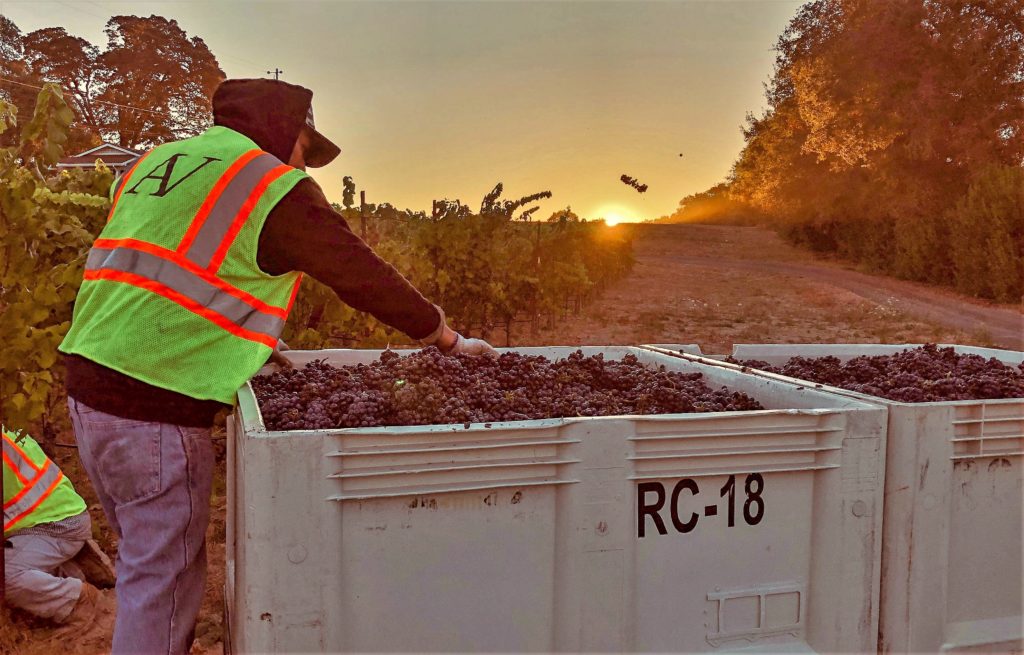
Roughly 3 pounds of nitrogen, 0.6 pounds of phosphorus and 5 pounds of potassium are removed with every ton of grapes. This is a balance that should be remembered, but it doesn’t mean that every pound removed needs to be replaced each and every year because there are nutrients provided by soil reserves (organic matter and minerals), by cover crops (nitrogen) and by deposition (also nitrogen). Tissue and soil sampling are a crucial component of nutrient management. It will always help to have a crop advisor working with you. I suggest obtaining an independent advisor that you trust. While not necessary, you may want to look for certifications, such as Certified Crop Advisor or Certified Horticulturist. Consultants with advanced degrees in agricultural sciences are also worth seeking out.


I’m hoping to implement these ideas over the next couple of years in my vineyard. Fertilizer is something we’ve largely neglected and even still have had some good quality grapes. I’m hoping these ideas can take our grapes to the next level. Thank you for putting this out there.
Excellent article